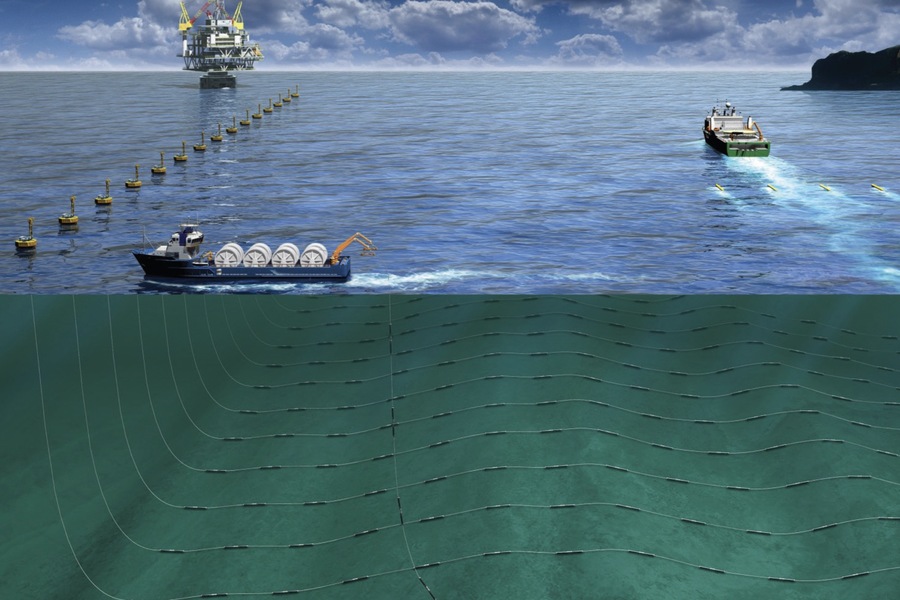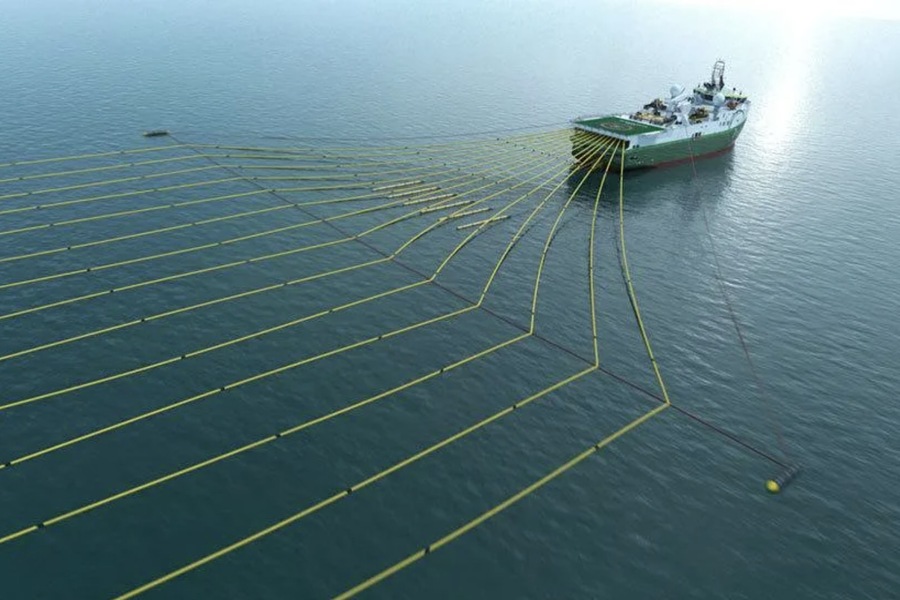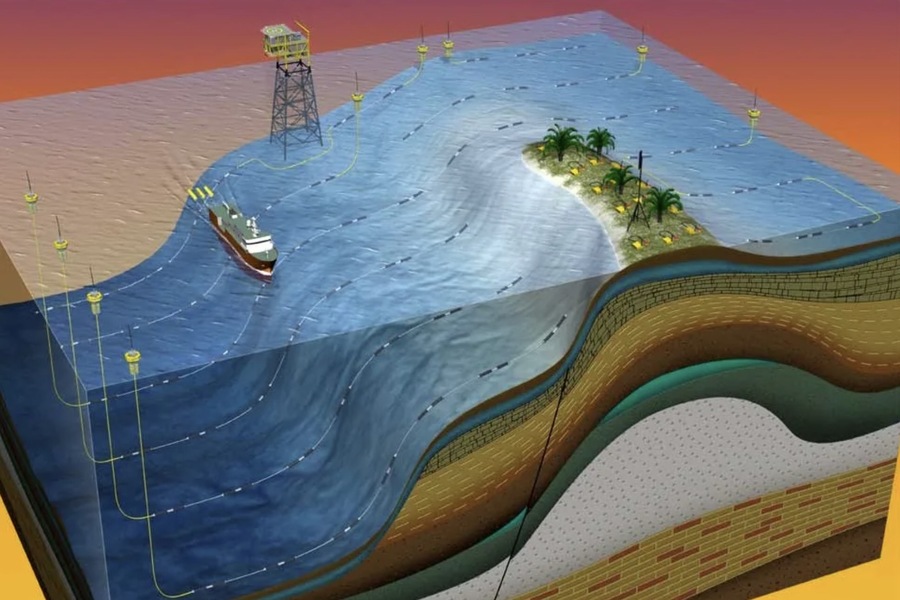The United Arab Emirates (UAE), known for its rapid growth in infrastructure and resource management, depends on precise and advanced geophysical survey methods to support its expansive construction, energy, and environmental projects. As urban development accelerates and oil and gas demands increase, geophysical seismic surveys have become a crucial tool, enabling companies to evaluate subsurface structures and assess potential risks. The use of seismic surveys by geophysical companies in the UAE has proven essential for maintaining structural safety, optimizing energy resource management, and supporting sustainable growth. This article explores the intricacies of geophysical seismic survey techniques, technological advancements, and the increasing demand for these services in the UAE.
Understanding Seismic Surveys in Geophysics
Geophysical seismic surveys involve creating controlled shock waves and measuring their reflections and refractions within subsurface materials to provide a detailed map of geological formations. These surveys help geologists and engineers visualize underground structures, detect resources, and identify potential hazards. There are two primary types of seismic surveys used in geophysical survey services:
Reflection Surveys
This method involves sending shock waves deep into the ground, which then reflect off various subsurface layers. By analyzing these reflections, geologists can map geological structures, which is essential for oil and gas exploration. Reflection surveys are instrumental in identifying hydrocarbon reservoirs and assessing their viability.
Refraction Surveys
Unlike reflection surveys, refraction surveys measure the speed at which shock waves travel through different subsurface materials. By determining wave speed variations, geophysicists can evaluate geological layers, such as soil or rock density, which is particularly valuable for construction projects to assess foundational stability.
Seismic surveys offer a non-invasive way to obtain accurate data, critical for projects in complex or sensitive environments. As urbanization in the UAE grows, seismic surveys have become increasingly relevant, supporting projects ranging from oil extraction to skyscraper construction.

Technological Advancements in Seismic Surveys
The field of geophysical seismic survey services has undergone remarkable transformation with the advent of technology. In recent years, innovations such as wireless geophones, advanced 3D and 4D seismic imaging, and machine learning algorithms have redefined the precision and efficiency of seismic surveys.
Wireless Geophones
Traditional seismic surveys relied on wired geophones, which could be cumbersome and challenging to deploy in remote or difficult-to-access locations. Wireless geophones, on the other hand, eliminate logistical hurdles, allowing for broader and more flexible survey coverage.
3D and 4D Seismic Imaging
While 3D imaging provides detailed subsurface visualizations, 4D imaging allows geophysicists to monitor changes over time. This capability is particularly useful in oil and gas extraction, where tracking resource depletion or identifying new deposits can optimize production.
Machine Learning and Data Interpretation
The vast amount of data generated during seismic surveys requires careful analysis. Machine learning algorithms are now assisting in interpreting seismic data more accurately and quickly, allowing geophysical survey companies to deliver more precise and actionable results.
With these technologies, geophysical companies in the UAE are equipped to deliver more precise surveys, improving the quality of data that engineers and developers rely on for critical projects.
Rising Demand and Market Trends
The demand for geophysical survey services in the UAE is on an upward trajectory, largely driven by infrastructure and energy projects. Globally, the seismic survey industry is projected to reach USD 12.5 billion by 2027, with the Middle East as one of the fastest-growing markets. The UAE’s continued investment in smart city initiatives, infrastructure upgrades, and energy exploration underpins this growth.
Extensive geophysical investigations are necessary for local infrastructure projects in the United Arab Emirates, such the Etihad Rail network. Seismic surveys are essential for locating and managing hydrocarbon resources in the energy industry. Economic stability is strongly impacted by the precision and effectiveness of seismic surveys because of the United Arab Emirates’ reliance on gas and oil. Because they guarantee that building and energy extraction are carried out with the least amount of risk to people and the environment, geophysical survey businesses in the United Arab Emirates are crucial to promoting sustainable growth.

The Economic and Environmental Advantages of Seismic Surveys
Economic and environmental sustainability are enhanced by seismic surveys. By reducing the need for exploratory drilling and minimizing the risk of subsurface instability, seismic surveys provide a low-impact alternative for subsurface analysis. This non-invasive approach supports environmental protection while offering significant economic savings.
Moreover, precise geophysical testing enables the optimization of natural resources, reducing waste and increasing efficiency. In a resource-rich country like the UAE, these benefits contribute to a more sustainable energy sector and align with the nation’s commitment to responsible growth.
Conclusion
Geophysical seismic survey services are a cornerstone of sustainable development in the UAE, providing essential insights into subsurface conditions that directly impact infrastructure and resource management. The rapid pace of technological advancements in seismic surveys, coupled with the UAE’s growing infrastructure and energy demands, highlights the importance of these services. By equipping decision-makers with accurate data, geophysical survey companies contribute to safer and more efficient project outcomes, reinforcing the UAE’s position as a leader in responsible urban and industrial development.

Basketball fan, father of 3, music blogger, Mad Men fan and storyteller. Producing at the crossroads of simplicity and intellectual purity to craft an inspiring, compelling and authentic brand narrative.
